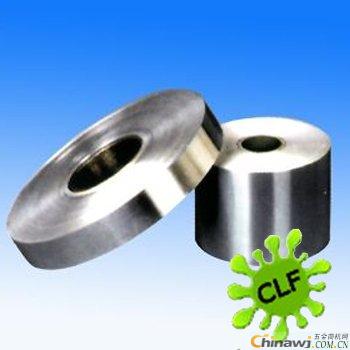201 stainless steel "target=_blank> stainless steel is easy to rust after cleaning?
Recently, many hardware processing customers have come to consult 201 stainless steel "target=_blank> stainless steel workpieces are easy to rust, the cleaning process has become very thorny, I hope that Changlufeng Chemical Company provides on-site technical guidance. Our company is engaged in hardware precision cleaning. Technical research has been going on for several years, and the handling of this problem is also commonplace. Why is 201 stainless steel "target=_blank> stainless steel easy to rust? And some 201 stainless steel "target=_blank> stainless steel will, some will not? Here we will theoretically tell one by one.
1,201 stainless steel "target=_blank> stainless steel strictly speaking should be called stainless iron, its chemical composition is very different from stainless steel "target=_blank> stainless steel such as 301, 304, and the chromium content is much lower. Stainless steel "target=_blank> stainless steel is based on the surface to form a very thin and strong chromium-rich oxide film, which acts as a barrier to stainless steel "target=_blank> stainless steel in contact with the external environment. Prevent oxygen atoms from continuing to infiltrate and oxidize. Obviously, the 201 stainless steel "target=_blank> stainless steel film is not as good as 301 or 304. If there is some factor that causes the film to be damaged, the damage will be in contact with the outside, and the reaction will form iron oxide, which will continue to corrode. .
2, 201 stainless steel "target=_blank> stainless steel did not rust at the time of cleaning, and after a period of time, it gradually appeared rust, in many cases appeared in the cleaning rinsing process. Many hardware manufacturers in the process of cleaning products Subjective, only concerned about whether the oil is cleaned, and only one or two rinses on the rinsing. If the naked eye seems to have no residue, it is considered to be clean. Actually this is not true. General stainless steel" Target=_blank>Stainless steel cleaners are alkaline. If the rinse is not thorough, the alkaline components in the detergent will remain in the microparticle state on the surface of the workpiece. There is no rust when the cleaning is completed, and the naked eye observation is quite perfect. However, after 3-10 days of storage, these alkaline components completely destroyed the protective film layer of 201, and rust spots appeared.
3. If the cleaning agent contains an acidic component, the entire 201 protective film layer may be damaged or become uneven and intermittently broken. Therefore, oxidative rust occurs after cleaning, and it is rusted in the form of whole sheet, partial rust or temporary storage.
4. Why is the cleaning agent neutral or rusting? I believe this situation will also occur after a period of storage. This is also a problem with rinsing residues. The water-based cleaning agent is mainly organic matter, and the residue of the organic matter is adsorbed on the workpiece, and then the organic adhering matter can condense the moisture in the air, and then adsorb the sulfide, carbide, nitride, etc. in the air. A galvanic cell environment is formed, and the protective film is destroyed, causing electrochemical corrosion and rust.
From the above analysis may be confusing, what kind of cleaning agent should be used, what kind of cleaning process? We take the choice of cleaning agent for Evergreen Chemical as an example.
First of all, our alkali and acid are more affected by the 201 stainless steel "target=_blank> stainless steel, the acidic cleaning agent is the most undesirable. The alkaline cleaning agent is mainly in the residual aspect, then it is ok to use it, but it is necessary to rinse. Pay more attention to the rinsing to be thorough.
Followed by a neutral cleaning agent, the cleaning agent itself will not have any effect on 201 stainless steel "target=_blank> stainless steel, but also a series of reactions caused by residues, so rinsing is also the key to attention.
So, we sum up, it is ok to choose alkaline or neutral detergents, mainly to do enough work on the rinsing process. Generally, the rinsing process must be at least 3 times, and if conditions permit, it can be heated and rinsed.
Finally, because the washing process is used, drying is very necessary, and thoroughly drying the surface of the workpiece is a guarantee to prevent rust!
Http://news.chinawj.com.cn
 The problem of rust easily after cleaning stainless steel "> Edit: (Hardware Business Network Information Center) http://news.chinawj.com.cn
The problem of rust easily after cleaning stainless steel "> Edit: (Hardware Business Network Information Center) http://news.chinawj.com.cn 
The working principle of a High Flow Peristaltic Pump like a snake swallowing an egg. The hose is constantly squeezed through the roller to make the hose generate pressure and push the liquid forward. Our designers make the Peristaltic pump head and hose fit perfectly by designing precise roller size and pump head structure. So as to achieve the purpose of accurate liquid metering transmission or filling
1. Clean and pollution-free: the fluid only passes through and touches the peristaltic pump hose.
2. High precision: constant current, reproducibility of up to 0.5%, and flow can be precisely adjusted.
3. Low shear force: It is an ideal tool for conveying shear-sensitive and corrosive fluids.
4. Corrosion resistance: it can transport various fluids, such as organic solvents and corrosive liquids.
5. Idling and dry operation: air or gas-liquid-solid three-phase mixed transportation can also be transported.
6. Possess self-priming ability: self-priming, no need to fill the pump, no need to empty.
7. With stop valve function, no siphon, no seals, stop valve and check valve function.
8. Two-way conveying function: reverse pumping and back-suction functions can be realized by changing the direction of the pump runner.
9. Simple maintenance: only need to replace the peristaltic pump hose, no valve and seal replacement.
High Flow Peristaltic Pump,Additive Peristaltic Pump,Polishing Liquid Pumps,Intelligent Transfer Peristaltic Pump
Baoding Chuangrui Precision Pump Co., Ltd. , https://www.crperistalticpump.com